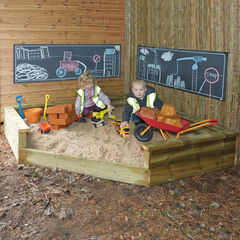Over a series of blogs I am looking at all of the main patterns of playful behaviour or ‘schema’:
Blog 1: Rotation and Trajectory
Blog 2: Enveloping and Orientation
Blog 3: Positioning and Connection
Blog 4: Transformation
Blog 5: Transportation
Here we will look at Transformation
Transformation – Change in form, appearance, nature, or character.
It is almost impossible for an adult to understand how an infant sees the world. We often make huge assumptions that their understanding is in anyway similar to ours, but it is not. They are detectives, trying to make sense of a fascinating and perplexing world. They are both all accepting and all questioning. The schema of transformation is probably the most complex and the one that holds the most fascination for children. From empty to full, from wet to dry, from solid to liquid, small to big, alive to dead; children want to know what makes these things happen, why, can they be undone, and can I control them?
Change is at the heart of all experience
The universe and anything in it does not stand still. The ability to harness and control change and adapt to its consequences are among the most important skills in life.
Change in form
Some things change in form and you can’t make them go back: a block of ice sitting on the sand pit slowly changes form and as if by magic disappears into the sand. Others are endlessly changeable: a lump of plasticine can be made to change its form from a sausage to a snake to a coil to a plate to a bowl and back to a lump. Try to provide many opportunities for making, unmaking, constructing, de-constructing, kneading, moulding and shaping of materials.
Change in appearance
Changes in clothing, make up, lighting or how we are reflected all change our appearance. We associate changes in appearance with changes in nature, and children need lots of opportunities to try out transforming who and what they seem to be. Places can be transformed too. The makeover format of TV show demonstrates the enduring appeal of changing places. A good early years setting will be a fluid space with the ability to transform its appearance and form.
Changes in nature
The nature of something is the set of qualities that make it what it is and best serve its purpose. Take a shoe; the nature of a shoe is that it fits on the foot and protects the sole. If we changed its nature we could put it on our hands and use it for painting. Children love the sillyness of messing with something’s nature, like a hat on your foot, or glasses on the back of the head. It appeals to the humour of upended-order and is a catalyst for inventiveness, enabling new connections and functions to be created. Make sure that your approach to resources is not limited to your adult perception of the resources nature but open to the children’s exploration transforming the nature of a thing into a quite different thing.
Changes in character
Children need to be able to explore and understand the full emotional range of human experience, from calm to excited, happy to sad, peaceful to angry. We should not expect children to always be calm and pliable; like Max in Where the Wild Things are, they need to able to transform between noisy, bossy, monsters and kind, quiet and respectful students. As adults we can support children by enabling drama, make believe, fantasy, role-play, and super hero play, as all of these give licence to children to transform their natures and like Max come safely back to their true characters again.
View the series of blogs I am writing on patterns of playful behaviour or ‘schema’:
Blog 1: Rotation and Trajectory
Blog 2: Enveloping and Orientation
Blog 3: Positioning and Connection
With thanks to Michael Follett BA Hons, PGCE, for writing this post. Michael is a former playworker, teacher and school improvement officer. He is currently director of OPAL and works with primary schools across the UK.


OPAL Outdoor Play and Learning CIC Ltd is a registered community interest company dedicated to improving the quality of play in primary schools and early years settings.








